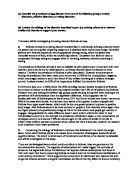First of all, when it is thought that Bulimia is based on biological etiologies, biomedical therapies are commonly used. McGilley and Pryor (1998) well supports this approach. Through the study, the two psychologists aimed to investigate effectiveness of treating patients by using SSRI (prozac). They conducted the study with 382 patients and divided into two groups. The members of the first group received real Prozac. On the other hand, the other group received placebo, sugar pill. As a result, it was found out that vomiting was reduced in 29 per cent of those receiving the drug whereas there was effect only on 5 percent in those given a placebo. It was also turned out that reduction of binge biting and vomiting, which are behavioral symptoms, were resulted because of higher intake of the drug. The study of McGilley and Pryor clearly explains effectiveness of biomedical approaches on bulimia, and there are nothing wrong. The US Food and Drug Administration allowed the researchers to use of SSRI for the treatment of bulimia nervosa based on such studies. Also, data of the study was fully published in 1992, and confidentiality of the clients was kept. In addition, this study is reliable, since it was successful replicated by Goldstein et al in 1995. He found that Prozac reduced binge eating 51 percent, whereas only 17 percent of patients who received placebo reduced the symptom.
Individual therapy, especially Cognitive Behavioral Therapy (CBT), is the most widely used when treating bulimia nervosa. The therapy stresses the importance of cognitive aspects in bulimia, such as dichotomous thinking and obsession with body weight. By confronting with a psychologist, the patients tell specifically about their eating patterns, their feeling about it. Also, the clients are asked to tell what causes them binge eating and vomiting. After answering to the questions of the psychologist, the patient get feedback and learn various cognitive techniques. These lead them to improve self esteem, to express adequate feelings and to avoid damaging thought patterns. Wilson (1996) supports the cognitive therapy for patients of bulimia nervosa. He found that 50 percent of the patients who were treated with the individual therapy stopped binge eating. Nevertheless, a thing to be pointed out in his study is that the other 50 percent of the patients showed only partial improvements, and some of them did not show any difference after using the therapy.
Group therapy, which is related to sociocultural etiology, is also widely used to treat the eating disorder. A research of McKisack et al (1997) supports the approach. He reviewed researches, which are about effectiveness of various therapies in the treatment for bulimia. As a result, it was found out that group therapy was relatively effectively for treating the eating disorder. According to his analysis, it was also found that the treatment is especially effective, if individuals who have a same characteristic gather get the group therapy together. In addition, he found out that it was more effective when the therapy was used in long term with different types of therapies and intensive scheduled sessions. However, there are disadvantages when using group therapy. Confidentiality may be an issue in the group, and a psychologist cannot fully focus on a patient’s disorder. Nevertheless, individuals can feel he or she is in a group and solves personal problems better by hearing others problems, which can be similar to one’s own problem. Moreover, it is cost effective, compared to individual therapy. The group therapy suggested by McKisack et al in 1997 was further supported by family system model established by Minuchin. The model states that dysfunctional behavior of individuals is basically caused by dysfunction within the family. By using family therapy, the psychologist tried to form family system again along healthy lines.
As can be seen from the above studies and research findings, treatment of bulimia nervosa can be varied. It has been shown that treatment of the eating disorder is linked to what was thought to be etiology. Not only biomedical treatment, but also cognitive behavioral therapy and group therapy can be used for each different types of etiology. However, one certain thing is that we cannot be reductionist. We have to take into consideration all sociocultural, biological and cognitive factors. Likewise, causes of bulimia nervosa can be complex, and people benefit from the each different types of treatment. Therefore, eclectic approach, which is to treat patients not only biologically but also cognitively and socially, may be more effective to treat the eating disorder.







